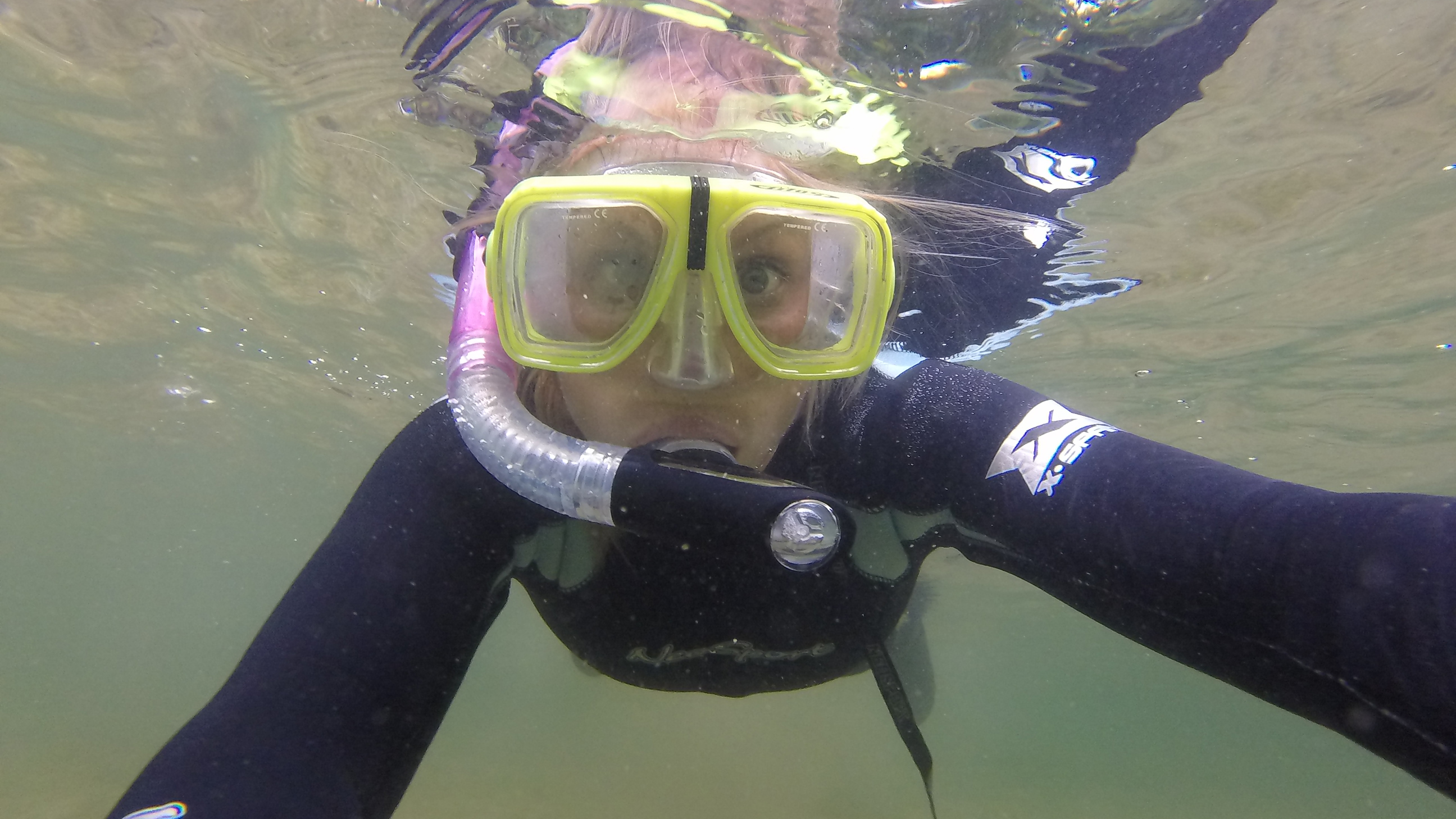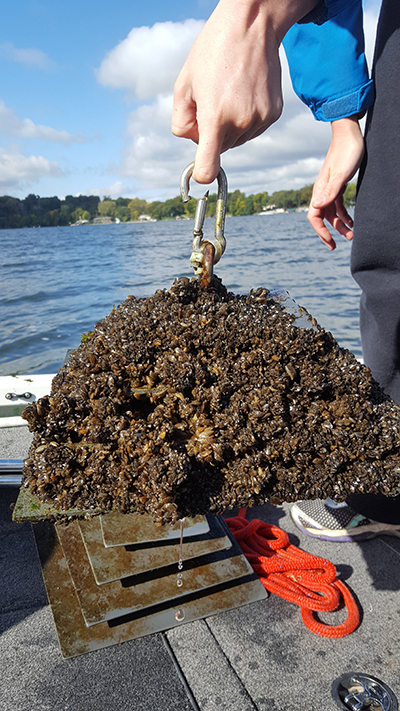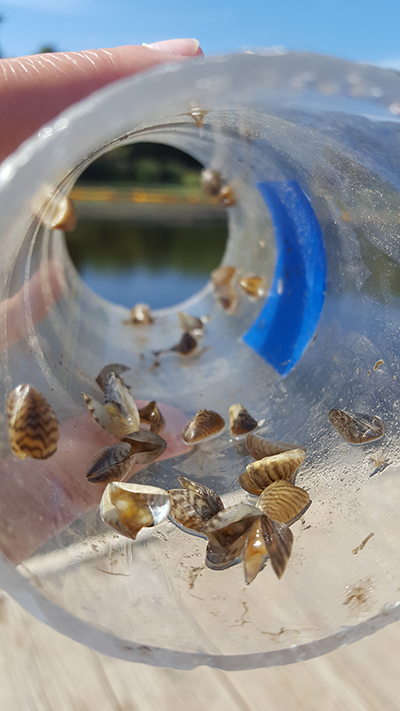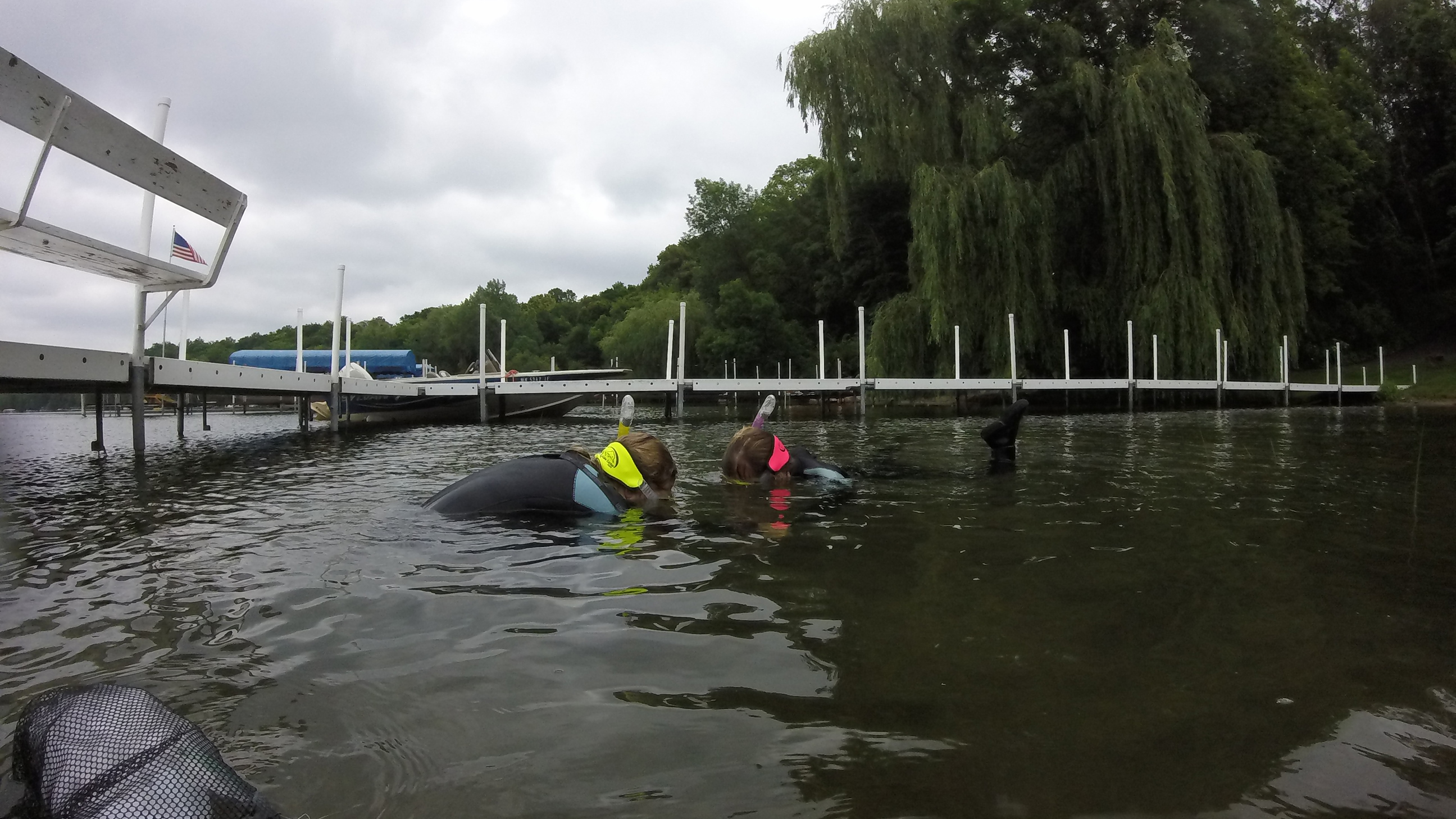Finding an individual zebra mussel – an invasive species the size of your fingernail – in a large lake might seem like finding the proverbial needle in the haystack. And, actually, it may even be harder: zebra mussels blend in with their underwater environment, appearing to be just another little rock.
Most zebra mussels are found when they’ve already become the full-bore infestation that has made them infamous. A kid pulls up a soda can that is encrusted with them, or a boat dock owner notices all underwater surfaces coated with millions of mussels.
Finding a new occurrence of these mussels, on purpose, before they become established? It seems like hunting unicorns.
Enter Jill Sweet.
Sweet, an aquatic invasive species technician with Minnehaha Creek Watershed District in Minnesota, tries to find zebra mussels and other invasives before they become established in new waters. She’s found two new occurrences of zebra mussels, as well as three other new invasive species occurrences.
I regularly interview conservation biologists searching for cryptic creatures: rare birds, nocturnal predators, well-camouflaged snakes. But for sheer difficulty and pure tedium, maybe nothing tops the hunt for a tiny creature that rarely moves.

The Zebra Mussel Invasion
Zebra mussels and the related quagga mussels have become two of the most notorious invasive species on the planet. Zebra mussels were first introduced into the Great Lakes in the 1980s when ships dumped ballast water containing the species. By 1990, the mussels had infested all the Great Lakes.
Today, the two species are found in hundreds of water bodies in 29 states. Their infamy stems from their habit of coating everything: dense mats of mussels that crowd out all other life. Filter feeders and prolific breeders, they spread in their new habitat with few constraints.

While estimates vary, most sources report at least 10 trillion zebra and quagga mussels in the Great Lakes. They have cost power companies $3 billion due to encrusting hydropower facilities. They outcompete a long list of native species.
“Zebra mussels are terrible but they’re also really cool,” says Sweet. “They’re so capable of just taking over. They cover everything. They’ll cover themselves.”
And they’re spreading, often with human help. Boaters move from one lake to another, with tiny mussels as the unseen cargo.
As with any non-native invader, prevention is the best strategy. But the next line of defense is detecting new invasions early. When mussels are introduced, they may not immediately take over. They may exist as an individual or just a few mussels. At this point, it’s possible to control or eradicate them.
The challenge: finding them. That’s Jill Sweet’s job.
Mussel Memories
Sweet patrols 129 lakes and waterways in her watershed district for aquatic invasive species. Given the mussel’s propensity to coat any flat surface, the first step is setting out what might be considered mussel traps: a square of PVC material for the mussel to attach themselves.

The next step: Sweet and her team don snorkels and start searching. A lake. For a tiny, camouflaged, sedentary creature.
“It can be really tedious,” she says. “You’re snorkeling and picking up rocks, looking at each one. I focus on shaded areas, which is what the mussels prefer. I try to cover a whole area very carefully.”
Of course, many of the challenges are mental. Sweet is searching for something that may not be there. “When I’m done and I haven’t found one, I’m always left wondering,” she says. “Did I not search very well, or are we really in the clear?”
And what is success? Is it finding a mussel, or not finding one? “Finding them is exciting, but in a really bad way,” she says. “I’ll admit there is a thrill in searching, like a weird Easter egg hunt. My job is to find them. But I also don’t want to find them. It is definitely a weird position to be in.”
She recalls her first find, in the clear waters of Christmas Lake. Repeated checks of the PVC plates revealed no mussels. She and her team had spent a lot of time swimming and checking rocks throughout the summer. And then, one day they were there.
“We found the mussel on the PVC plate at the boat launch,” Sweet says. “And then we found 5000 more on rocks at the boat launch. But a few weeks ago there had been none.”
Curiosity Finds the Mussel
Of course, once a mussel is found, it necessitates a rapid response. “If there is a low population that is contained to a certain area of the lake, then you can attempt some form of treatment,” Sweet says.

Contained populations of mussels can be treated with various forms of molluscicide, but this is not viable over large areas. In Christmas Lake, the watershed district treated the area around the boat launch in the hopes that the zebra mussels could be contained. But then a handful of mussels were located just out of the treatment area. They treated again.
A year later, mussels were located on the other side of the lake. At that point, complete eradication was nearly impossible.
“You have to deal with uncertainty,” says Sweet. “In this case, had the mussels already spread by the time we treated? Or did the lake have another introduction after the treatment? We just don’t know. We did learn a lot from our efforts at Christmas Lake that is being used for other rapid responses around the state.”
The second lake where Sweet found mussels, Minnewashta, was treated this summer. She won’t know whether that was successful until the spring, when she can resume her search.
“It can be hard to keep your energy,” Sweet says. “But I am visiting really magical lakes. I feel a need to help save that magic, to save their native species. When I get in the water, I am observant and am always questioning why I’m seeing what I’m seeing. I have to be constantly curious.”
Prevention remains the best course of protection. (Note to boaters, jet skiers, canoeists and anglers: Clean your boats and all gear whenever you move from one water body to the next. Doing so protects the waters you love, and will preserve the quality of your favorite sports).
But zebra and quagga mussels are daunting challenges. Can one person really make a difference when faced with trillions of invaders?
“Fewer than two percent of Minnesota’s lakes have invasive mussels,” Sweet says. “Fewer than five percent of Minnesota’s lakes have any invasive species. There is still hope for a lot of these lakes. But we can’t be complacent. That’s what keeps me out there, swimming, searching and picking up rocks – trying to find that next mussel I hope is not there.”





My first science related job was doing precisely this in Michigan over 20 years ago. Looking for veligers in plankton samples with techniques such as cross polarized light microscopy is more effective than physically searching for the animals for early detection purposes – I’ve done both, and have found dozens of new infestations – exclusively by the use of veliger detection methods I’d argue that by the time you find an adult (unless you are lottery-scale lucky), its already too late for a given body of water. Have any early detection treatments been successful in eradication? The recent rapid-response track record that I am most familiar with in New England is not encouraging.
I am so thankful for Jill and those who are working so diligently to save our native species.
I have read Walleye love zebra mussels. Has an introduction of walleye into a lake with a new zebra mussel population been tried as an early prophylactic?